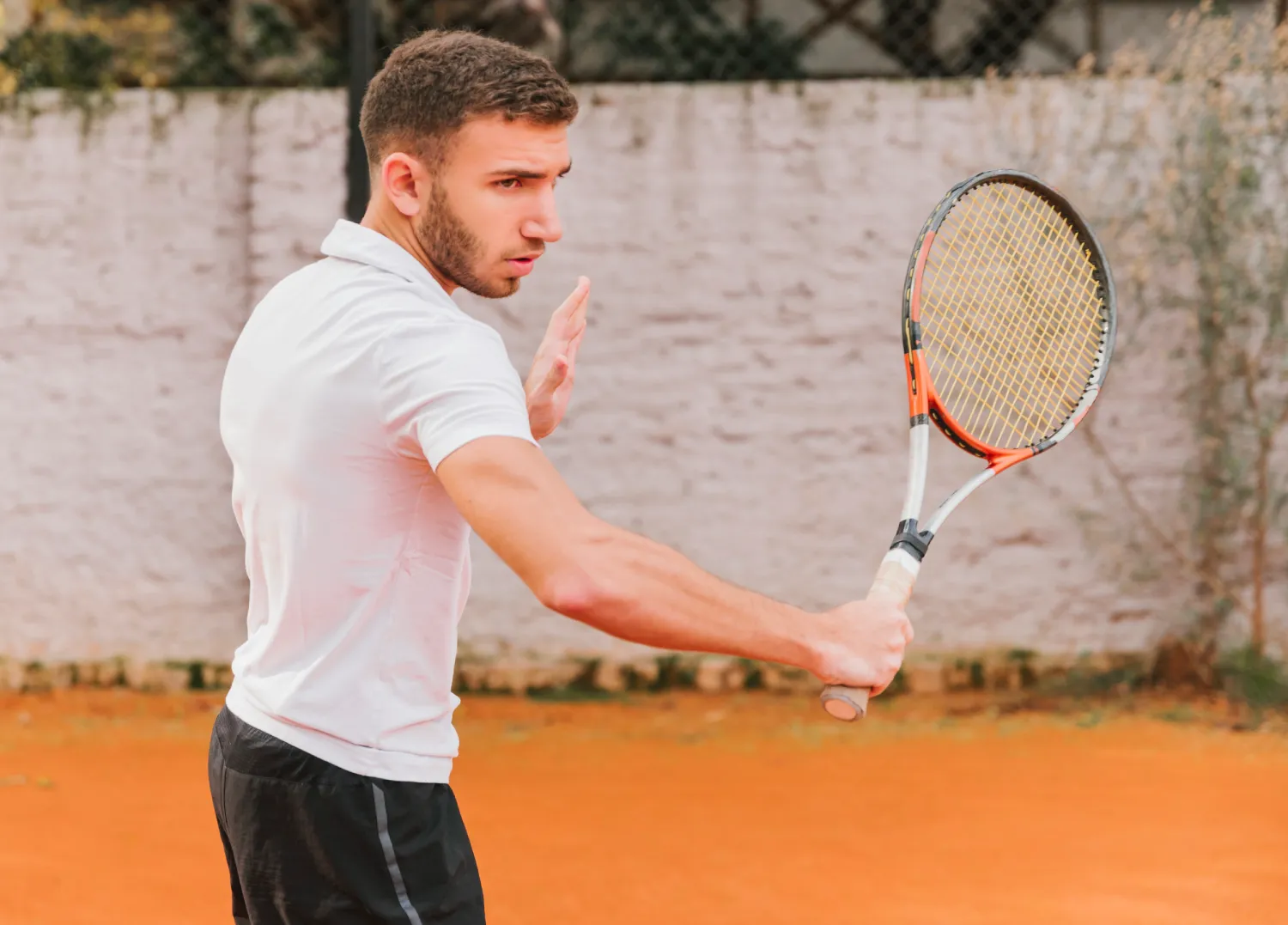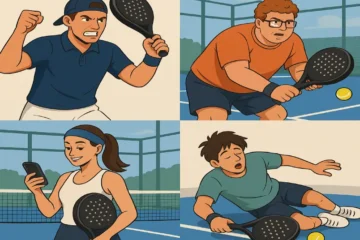In padel, mastering how to hold your racket is more than just a technical detail—it’s the foundation of your entire game. The correct grip can significantly impact your control, power, and ability to generate spin, influencing every shot you play. Whether you’re just getting started or aiming to fine-tune your technique, understanding the various padel grip styles will help you adapt to different situations on the court and elevate your performance.
While padel shares similarities with tennis, the grip styles are uniquely adapted to the sport’s fast pace, smaller court, and different racket design. Let’s explore the basics and dive into the most common grip styles used in padel.
Understanding the Basics of a Padel Grip
Although padel is often compared to tennis, the grips used in each sport have distinct differences. A padel racket doesn’t have strings, and it’s shorter, which affects how the player feels the impact of the ball. Because of this, comfort and proper technique become even more crucial.
Grip size also plays a key role. A grip that’s too thick or too thin can affect your swing and even lead to injuries like tennis elbow. To check if your grip is right, hold your racket with your playing hand and slide the index finger of your non-playing hand between your fingers and palm. A snug—but not tight—fit indicates the correct size.
Comfort matters, but so does function. If your grip feels off or slips during shots, it’s likely affecting your game. The goal is to hold the racket firmly without squeezing it too tightly. A relaxed grip allows fluid wrist motion, essential for topspin and control.
The Continental Grip (The Universal Grip)
The most widely used and versatile grip in padel is the Continental Grip. Often referred to as the “universal grip,” it’s effective for a wide range of shots including serves, volleys, smashes, and defensive lobs.
To find the Continental grip, imagine shaking hands with your racket. Your index knuckle and the heel of your hand should rest on the second bevel of the racket handle. This neutral position provides balance and allows you to quickly transition between different shots without needing to adjust your grip dramatically.
This grip’s main advantage is its adaptability—it works well for forehands, backhands, and net play. However, it may feel less powerful for baseline forehands compared to specialized grips like the Eastern or Western grip. Still, for beginners and intermediate players, it offers consistency and control in most scenarios.
The Eastern Grip (Forehand Grip)
When players seek more power and topspin from their forehand, many adopt the Eastern Grip. It’s ideal for offensive play from the back of the court, particularly when you want to drive the ball deep or apply pressure with topspin.
To position your hand for the Eastern grip, rotate your racket so your index knuckle rests on the third bevel. This adjustment naturally closes the racket face slightly, allowing you to brush up on the ball and generate more topspin.
This grip delivers excellent control for aggressive baseline play and is particularly effective for forehand winners. However, it’s less effective for backhand shots and can be awkward to use at the net. For this reason, players often switch back to the Continental grip when moving forward in the court.
The Western Grip (Extreme Topspin Grip)
The Western Grip is uncommon in padel but favored by some advanced players who want to hit with heavy topspin, especially on high-bouncing balls. This grip requires a significant rotation of the hand, placing the index knuckle on the fourth or fifth bevel.
Using this grip opens up the ability to strike the ball with a low-to-high motion, producing massive topspin. However, the Western grip comes with trade-offs. It’s not ideal for low balls, fast reactions, or volleys. Its extreme angle makes it difficult to execute quick transitions and is therefore best reserved for players who have mastered the fundamentals.
Because of its complexity, the Western grip is mostly used in very specific game situations and by players who are confident in their technique and wrist flexibility.
The Two-Handed Backhand Grip
Players transitioning from tennis often find comfort in the Two-Handed Backhand Grip, which provides added stability and control, especially during high-impact backhand shots.
For this grip, the dominant hand usually holds the racket in a Continental position, while the non-dominant hand (typically the left hand for right-handed players) is placed above it, almost in an Eastern forehand position. This dual-hand support creates a solid base for powerful backhands.
The main benefit of the two-handed grip is improved stability and ease of generating power, making it suitable for younger players or those building confidence with their backhand. However, it limits reach and can slow down quick volley exchanges at the net.
Choosing the Right Grip for Your Play Style
Selecting the best padel grip style ultimately depends on your playing personality. Aggressive players who dominate from the back of the court may prefer the Eastern grip for its topspin and punch. On the other hand, defensive or tactical players often stick with the Continental grip due to its versatility and ease of use in various situations.
It’s common for experienced players to switch grips mid-match depending on shot selection. This adaptability becomes second nature with practice. If you’re unsure which grip suits you best, spend time experimenting during training sessions, paying close attention to which grip feels most natural in different parts of the court.
Common Grip Mistakes & How to Fix Them
One of the most frequent errors in padel is holding the racket too tightly. A tense grip restricts wrist movement, decreases accuracy, and can lead to fatigue or injury. Another common mistake is using a single grip for every shot—while this might work at lower levels, it becomes a limitation as you progress.
Additionally, many players fail to adjust their grip based on positioning. The grip you use near the net might not be optimal for baseline rallies. Paying attention to these adjustments can dramatically improve your shot quality and consistency.
To fix these mistakes, focus on maintaining a relaxed grip, learn the correct bevels for each grip style, and develop the habit of reassessing your grip as you move around the court.
How to Improve Your Grip Technique
Improving your grip technique is a gradual process that requires intentional practice. One effective drill is to alternate between different grip styles while hitting forehands and backhands. This builds muscle memory and comfort with transitions.
Wrist flexibility also plays a key role in executing precise shots, especially when topspin is involved. Simple stretching and mobility exercises can enhance your wrist control and reduce injury risk.
Another practical tip is to use overgrips. These not only enhance comfort and absorb sweat but also slightly increase grip size, helping you maintain a more secure hold without over-tightening.
Conclusion
Your grip is the first point of contact between you and your padel racket, making it one of the most important aspects of your technique. By understanding the different padel grip styles—Continental, Eastern, Western, and Two-Handed Backhand—you’ll be able to match your grip with your game plan and court positioning.
There’s no universal “best” grip, but consistency, comfort, and adaptability are the keys to success. Experiment with each grip style, refine your technique, and most importantly, practice regularly. Over time, your improved grip will lead to greater control, enhanced power, and a more confident presence on the padel court.
FAQs About How to Hold a Padel Racket
What is the best way to hold a padel racket?
The best way to hold a padel racket depends on your level of play and the type of shot you’re aiming to perform. For most players, especially beginners and intermediates, the Continental grip is ideal. It allows for versatility across different strokes—serves, volleys, and defensive shots—without the need to change hand position constantly. As you gain experience, you may experiment with other grip styles like the Eastern or Western grip for more spin or power.
How do I know if I’m using the correct grip?
A correct grip feels natural, doesn’t strain your wrist, and allows smooth control of the racket during play. One simple way to check is by performing the “handshake” test—grip your racket as if you’re shaking hands with it. Your hold should feel firm yet relaxed. If your wrist feels tight, the racket slips, or you struggle to control direction and power, you may need to adjust your grip style or size.
What grip do professional padel players use?
Most professional padel players rely on the Continental grip because of its flexibility in fast-paced games and its effectiveness for volleys, lobs, smashes, and serves. However, during intense rallies or specific shot setups, some players transition to Eastern or hybrid grips to add more spin or drive to their strokes. Advanced players are comfortable switching grips fluidly based on shot selection.
Can I use the same grip for all shots in padel?
Technically, yes—you can use the Continental grip for almost every shot in padel. That’s why it’s often taught first to beginners. However, if you want to add variety and improve your offensive game, learning when and how to change your grip for forehands or topspin shots can give you a competitive edge. Over time, adapting your grip based on court position and match context becomes second nature.
Is there a difference between tennis and padel grips?
Yes, there are subtle but important differences. Although padel grips share some similarities with tennis grips, padel rackets are smaller, without strings, and the shots require more compact, wrist-driven motions. In tennis, players often use grips like the Semi-Western or Western more extensively, while padel favors the Continental grip due to its fast reflex requirements and close-range gameplay.
How tight should I hold my padel racket?
Your grip should be firm but relaxed. Holding the racket too tightly can limit wrist movement, reduce spin potential, and increase the risk of injury. A relaxed grip gives you better feel and control, especially during volleys and soft-touch shots near the net. Many players make the mistake of squeezing the racket too hard, especially during high-pressure moments—staying loose is key to playing your best.
What grip should I use for a backhand in padel?
For most single-handed backhands, the Continental grip works well, especially during defensive shots and volleys. If you’re transitioning from tennis or prefer more stability, the Two-Handed Backhand grip is a great option. It gives you more power and control, particularly when returning high or fast shots. Just be mindful that it slightly reduces reach and quickness at the net.
Do I need to change grips during a match?
Yes, advanced players often switch grips based on the type of shot they’re preparing to hit. While the Continental grip can cover most scenarios, transitioning to an Eastern grip for aggressive forehands or using a two-handed grip for difficult backhands can improve your performance. Developing the habit of adjusting your grip fluidly during matches helps you respond more effectively to different ball heights, spins, and angles.




